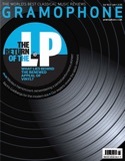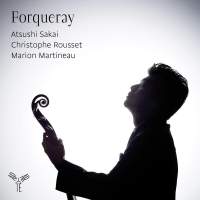Texte paru dans: / Appeared in: |
|
|
Outil de traduction (Très approximatif) |
|
|
Reviewer:
Julie Anne Sadie With the exception of some of the big pièces de caractère of Marin Marais, the five suites for bass viol by the Forquerays, father and son, are much the most technically demanding – and no less musically rewarding – in the repertoire. Wieland Kuijken was the first to record a Forqueray suite, No 5, in 1970 (Harmonia Mundi – nla).
Nearly a half century on, only a handful of players have recorded complete sets. John Hsu (Musical Heritage Society – nla) was the first, in 1972, marking Antoine Forqueray’s tercentary, but it wasn’t until 1995 that a second complete set appeared: Paolo Pandolfo’s polished and wideranging performances set the gold standard. A third, superbly executed set from Lorenz Duftschmid (a Savall pupil) appeared in 2006, making Atsushi Sakai’s 2015 only the fourth.
Sakai’s performances are distinguished by the freshness and sincerity of his interpretations. He is an eloquent exponent, never pretentious or superficial, never afraid to play slowly. He produces a consistently lovely tone, and his sense of Forqueraian phrasing and attention to detail are impressive. He is both fortunate and honoured to be partnered by Christophe Rousset, whose stylish yet transparent and evocative realisations are peerless, and Marion Martineau, who perfectly blends her instrument’s tone-colour to Sakai’s.
In each of the five suites, at
least two pieces stand out from other recorded versions. In the First Suite they
are his melancholic interpretation of ‘La Cottin’ and the wistful, feminine
portrait of ‘La Portugaise’. In the Second they can be found in the preludic,
expressive qualities of his ‘La Bouron’ and the courtly slo-mo of ‘La Dubreuil’,
qualities further explored in the Third Suite in ‘La Régente’, in which Sakai
paints an affectionate musical portrait, and ‘La Du Vaucel’, which is sublimely
atmospheric and carries the listener back in time. In the Fourth it is the
keenly observed nobility of ‘La Clément’ and the stillness of the ‘Sarabande La
D’Aubonne’ that cast a spell, and in the Fifth, the expressive high notes and
leaps in the magisterial ‘La Rameau’, the wonderfully sustained, poised
‘Sarabande La Léon’ and the nostalgia – even a sense of the ethereal – he
expresses in ‘La Silva’ that make this latest set essential listening: Forqueray
as you’ve never heard him before. |
|
|
|
|
|
Cliquez l'un ou l'autre
bouton pour découvrir bien d'autres critiques de CD |
|




